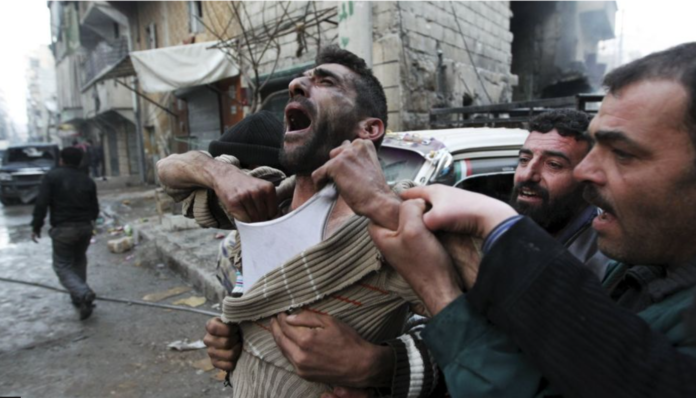
Even before the conflict began, many Syrians were complaining about high unemployment, corruption and a lack of political freedom under President Bashar al-Assad, who succeeded his father, Hafez, after he died in 2000.
In March 2011, pro-democracy demonstrations erupted in the southern city of Deraa, inspired by uprisings in neighbouring countries against repressive rulers.
When the Syrian government used deadly force to crush the dissent, protests demanding the president’s resignation erupted nationwide.
The unrest spread and the crackdown intensified. Opposition supporters took up arms, first to defend themselves and later to rid their areas of security forces. Mr Assad vowed to crush what he called “foreign-backed terrorism”.
The violence rapidly escalated and the country descended into civil war. Hundreds of rebel groups sprung up and it did not take long for the conflict to become more than a battle between Syrians for or against Mr Assad.
Foreign powers began to take sides, sending money, weaponry and fighters, and as the chaos worsened extremist jihadist organisations with their own aims, such as the Islamic State (IS) group and al-Qaeda, became involved. That deepened concern among the international community who saw them as a major threat.
Syria’s Kurds, who want the right of self-government but have not fought Mr Assad’s forces, have added another dimension to the conflict.
How many people have died?
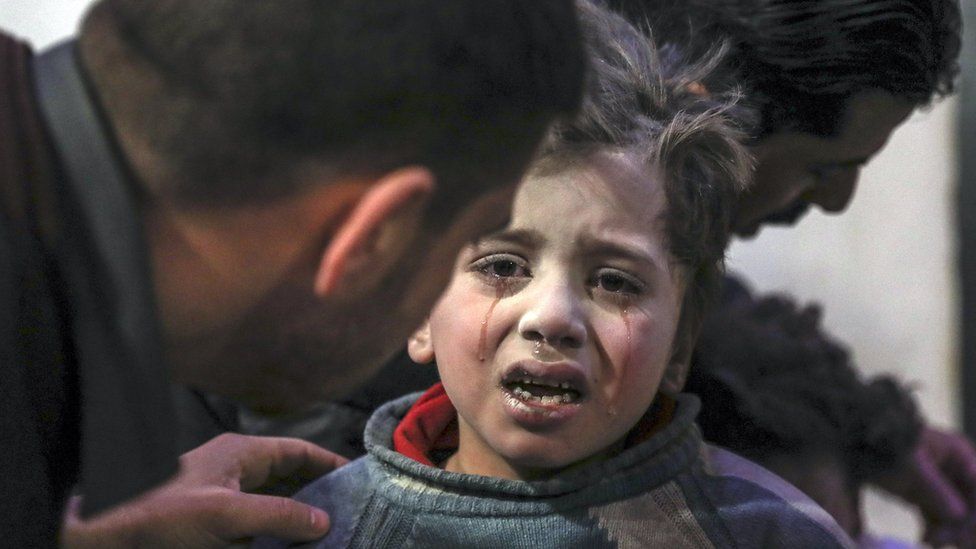
The United Nations has verified that at least 350,209 civilians and combatants were killed between March 2011 and March 2021, but it has warned that it is an “undercount of the actual number”.
UN human rights chief Michelle Bachelet said 26,727 victims were women and 27,126 were children.
The Syrian Observatory for Human Rights (SOHR), a UK-based monitoring group with a network of sources on the ground, had documented the deaths of 494,438 people by June 2021. It said at least 159,774 civilians had been killed, with the Syrian government and its allies responsible for most of those deaths.
The group estimated that the actual toll from the war was more than 606,000, saying 47,000 civilians were believed to have died of torture in government-run prisons and that it had been unable to document almost 53,000 reported deaths due to a lack of information.
Another monitoring group, the Violations Documentation Center, which relies on information from activists across the country, had documented 238,716 battle-related deaths, including 144,956 civilians, as of February 2022. It attributed 165,490 of those deaths to Syrian government forces and 35,610 to opposition factions.

Who’s involved?
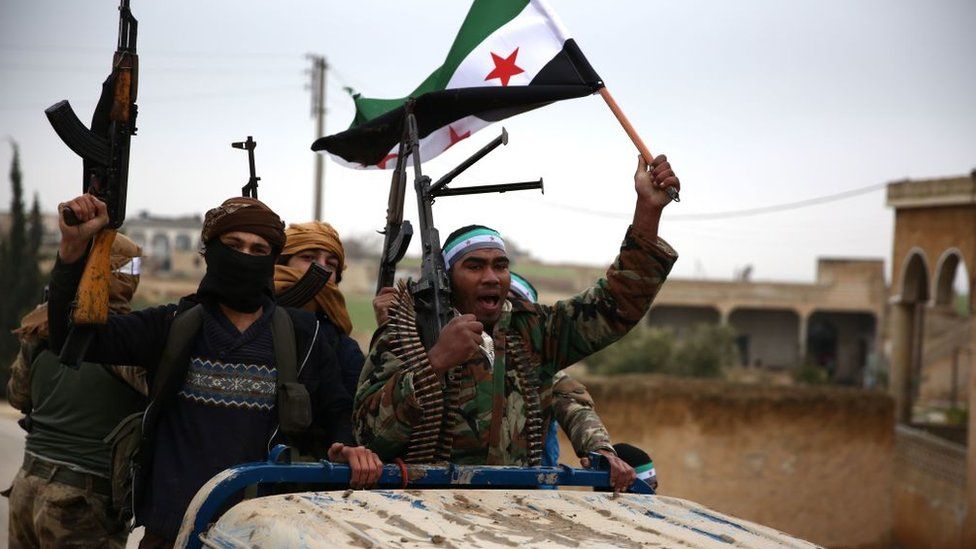
The government’s key supporters have been Russia and Iran, while Turkey, Western powers and several Gulf Arab states have backed the opposition to varying degrees during the conflict.
Russia – which had military bases in Syria before the war – launched an air campaign in support of Mr Assad in 2015 that has been crucial in turning the tide of the war in the government’s favour.
The Russian military says its strikes only target “terrorists” but activists say they regularly kill mainstream rebels and civilians.
Iran is believed to have deployed hundreds of troops and spent billions of dollars to help Mr Assad.
Thousands of Shia Muslim militiamen armed, trained and financed by Iran – mostly from Lebanon’s Hezbollah movement, but also Iraq, Afghanistan and Yemen – have also fought alongside the Syrian army.
The US, UK and France initially provided support for what they considered “moderate” rebel groups. But they have prioritised non-lethal assistance since jihadists became the dominant force in the armed opposition.
A US-led global coalition has also carried out air strikes and deployed special forces in Syria since 2014 to help an alliance of Kurdish and Arab militias called the Syrian Democratic Forces (SDF) capture territory once held by IS militants in the north-east and stop the jihadist group rebuilding.
Turkey is a major supporter of the opposition, but its focus has been on using rebel factions to contain the Kurdish YPG militia that dominates the SDF, accusing it of being an extension of a banned Kurdish rebel group in Turkey.
Turkish troops and allied rebels have seized stretches of territory along Syria’s northern border and intervened to stop an all-out assault by government forces on the last opposition stronghold of Idlib.
Saudi Arabia, which is keen to counter Iranian influence, armed and financed the rebels at the start of the war, as did the kingdom’s Gulf rival, Qatar.
Israel, meanwhile, has been so concerned by what it calls Iran’s “military entrenchment” in Syria and shipments of Iranian weapons to Hezbollah and other Shia militias that it has conducted air strikes with increasing frequency in an attempt to thwart them.

How has the country been affected?
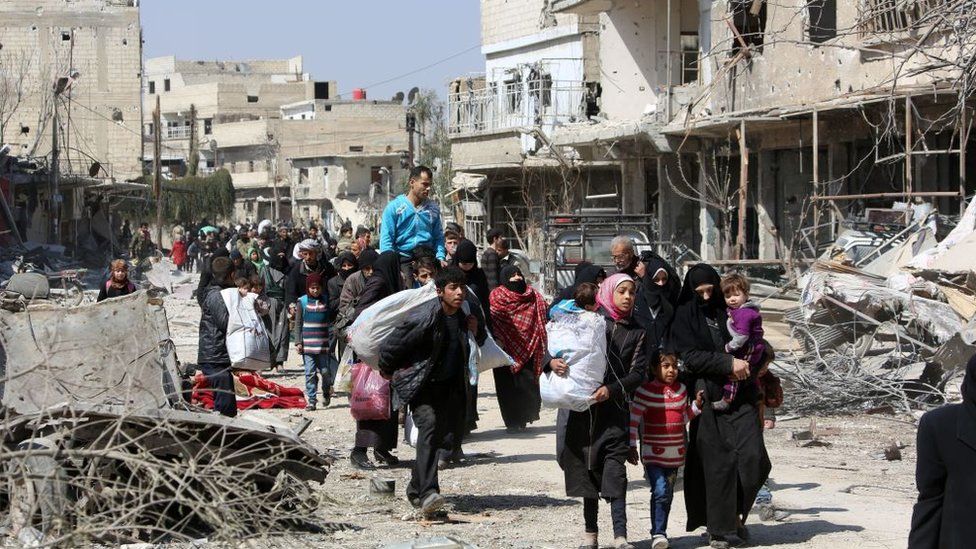
Eleven years of war have inflicted immense suffering on the Syrian people.
More than half of Syria’s pre-war population of 22 million have fled their homes. Some 6.9 million are internally displaced, with more than two million living in tented camps with limited access to basic services. Another 6.8 million are refugees or asylum-seekers abroad. Neighbouring Lebanon, Jordan and Turkey, which are hosting 84% of them, have struggled to cope with one of the largest refugee exoduses in recent history.
As of February 2022, 14.6 million people inside Syria were in need of some form of humanitarian assistance, according to the UN, including about 5 million classified as being in extreme or catastrophic need. More than 12 million people are struggling to find enough food each day – a 51% increase since 2019 – and half a million children are chronically malnourished.
In the past two years the humanitarian crisis has been compounded by an unprecedented economic downturn, triggered by strict US sanctions, the Lebanese economic crisis and the Covid-19 pandemic. The Syrian currency lost close to 80% of its value in 2021 and hyperinflation, which was close to 140% at the start of 2022, caused prices of basic goods to skyrocket. The poverty rate has reached an unprecedented 90%.
Syria has also been one of the countries in the Middle East worst affected by Covid-19, although the true extent is not known because of limited testing capacity and a devastated healthcare system. More than 3,100 confirmed deaths had been reported as of March 2022, while only 7.4% of the population had been fully vaccinated.
Entire neighbourhoods and vital infrastructure across the country also remain in ruins. UN satellite analysis suggested that more than 35,000 structures were damaged or destroyed in Aleppo city alone before it was recaptured by the government in late 2016.
And despite their protected status, 599 attacks on at least 350 separate medical facilities had been documented by Physicians for Human Rights as of March 2021, resulting in the deaths of 930 medical personnel. Such attacks – the vast majority of which were blamed on the Syrian government and Russia – have left only half of the country’s hospitals fully functional.
Much of Syria’s rich cultural heritage has also been destroyed. All six of the country’s Unesco World Heritage sites have been damaged significantly, with IS militants deliberately blowing up parts of the ancient city of Palmyra.
UN war crimes investigators have accused all parties of perpetrating “the most heinous violations”. “Syrians,” a February 2021 report says, “have suffered vast aerial bombardments of densely populated areas; they have endured chemical weapons attacks and modern day sieges in which perpetrators deliberately starved the population along medieval scripts and indefensible and shameful restrictions on humanitarian aid”.

Who is in control of the country now?

The government has regained control of Syria’s biggest cities, but large parts of the country are still held by rebels, jihadists and the Kurdish-led SDF. There have been no shifts in the front lines for two years.
The last remaining opposition stronghold is in the north-western province of Idlib and adjoining parts of northern Hama and western Aleppo provinces.
The region is dominated by a jihadist alliance called Hayat Tahrir al-Sham (HTS), but is also home to mainstream rebel factions. An estimated 2.8 million displaced people, including a million children, are living there, many of them in dire conditions in camps.
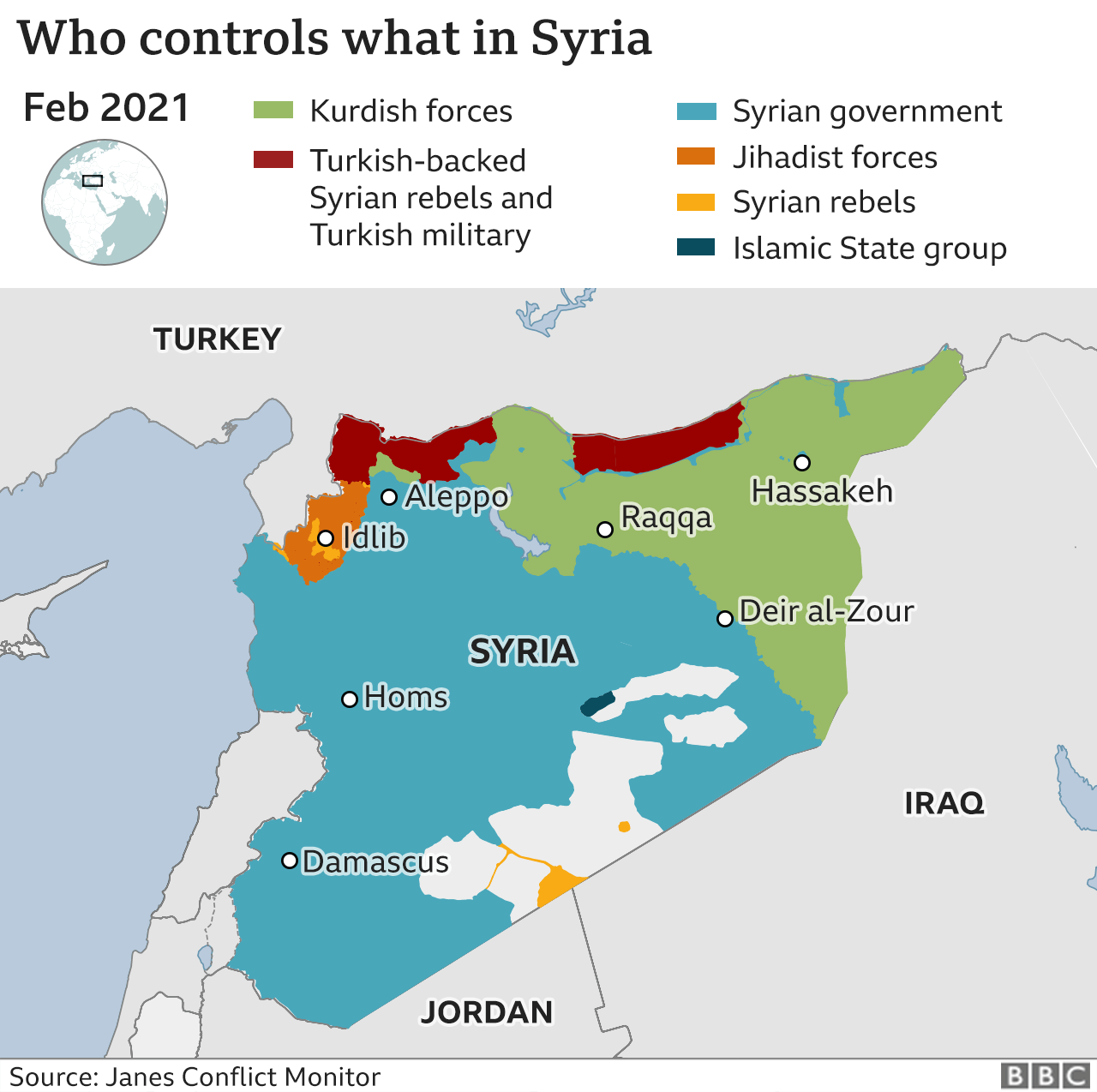
In March 2020, Russia and Turkey brokered a ceasefire to halt a push by the government to retake Idlib. That led to an extended lull in violence, but clashes, air strikes and shelling have intensified in the past year, particularly in southern Idlib.
In the country’s north-east, Turkish forces and allied Syrian rebels launched an offensive against the SDF in October 2019 to create a “safe zone” clear of Kurdish YPG militia along the Syrian side of the border, and have occupied a 120km (75 miles) long stretch since.
To halt the assault the SDF struck a deal with the Syrian government that saw the Syrian army return to the Kurdish-administered region for the first time in seven years. Despite the presence of Syrian troops, there are still regular clashes between the SDF and Turkish-led forces along the front line.
IS sleeper cells also continue to carry out frequent and deadly attacks.

Will the war ever end?
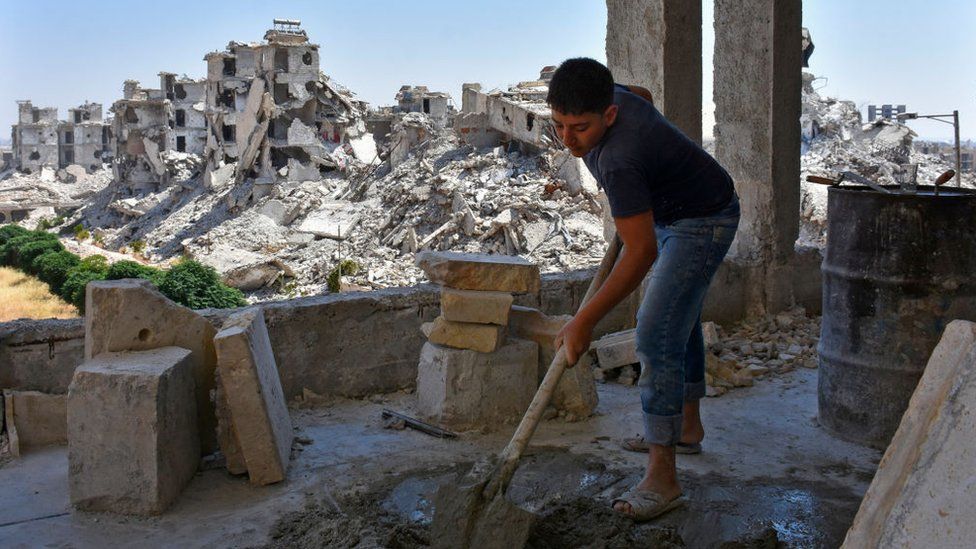
It does not look like it will anytime soon, but everyone agrees a political solution is required.
The UN Security Council has called for the implementation of the 2012 Geneva Communiqué, which envisages a transitional governing body “formed on the basis of mutual consent”.
Nine rounds of UN-mediated peace talks – known as the Geneva II process – failed to make progress, with President Assad apparently unwilling to negotiate with political opposition groups that insist he must step down as part of any settlement.
Russia, Iran and Turkey set up parallel political talks known as the Astana process in 2017.
An agreement was reached the following year to form a 150-member committee to write a new constitution, leading to free and fair elections supervised by the UN. The last round of talks was held in October 2021, after which UN special envoy Geir Pedersen said it was a “big disappointment” that the committee’s members had so far been unable to find a common path.
As the conflict entered its 12th year, Mr Pedersen asserted that “a military solution is an illusion” and that a political solution “is perfectly doable if the will is there”.
MORE:

